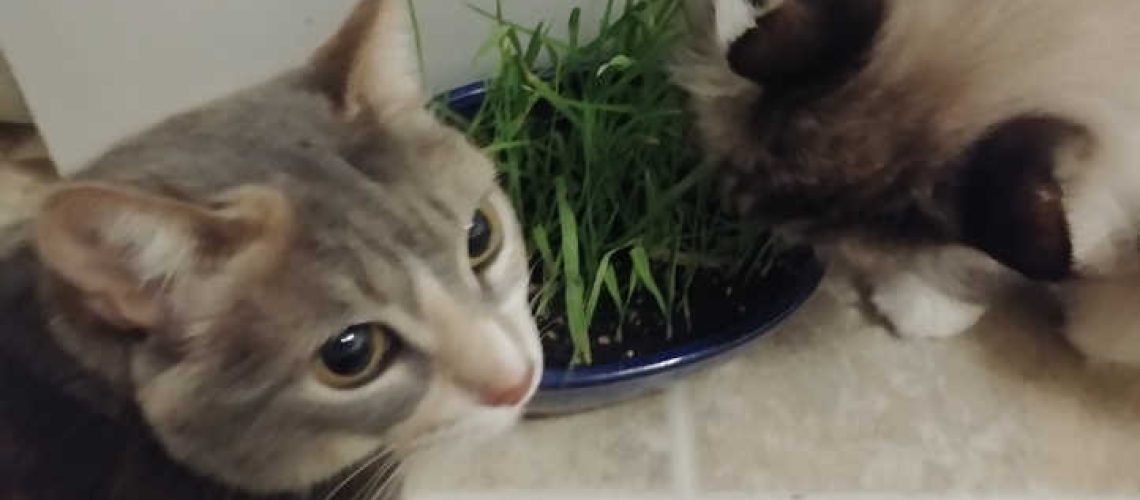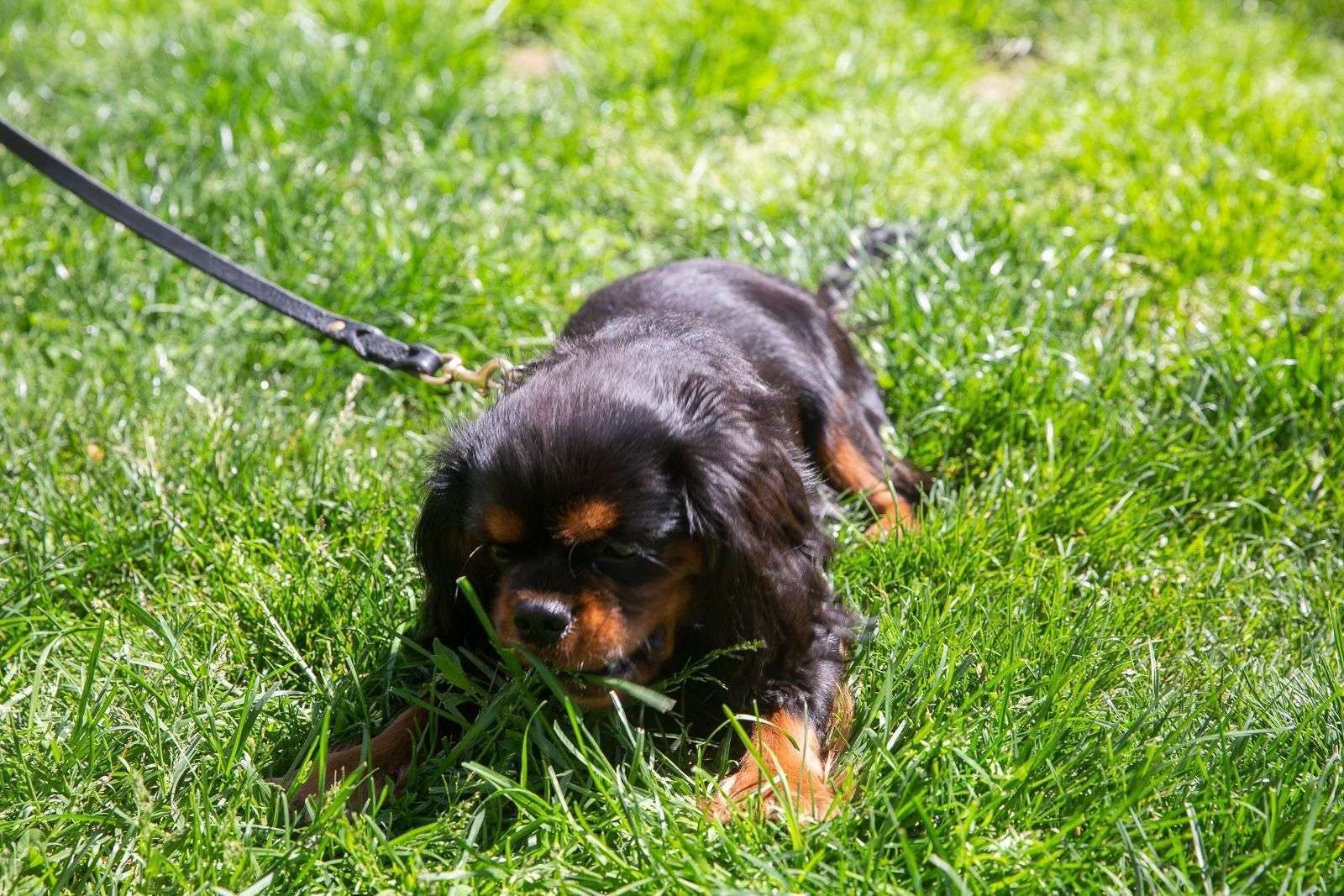Do you ever wonder why cats seem to have a special love affair with grass? It turns out there's more to it than meets the eye! Exploring the world of cat grass can unlock a whole new understanding of your feline friend and provide numerous benefits for their health and happiness. Whether you're a curious cat owner or simply intrigued by the secret lives of our furry companions, delving into this topic will reveal fascinating insights that can enhance your bond with your pet. So, let's dive in and uncover why cats adore cat grass – you might be surprised by what you discover!
Key Takeaways:
- Cats are naturally drawn to cat grass because it satisfies their instinctual need to chew on vegetation.
- Chewing on cat grass helps cats to improve digestion and prevent hairballs.
- Cat grass provides a safe and healthy alternative for cats to satisfy their chewing behavior, reducing the risk of them chewing on toxic plants or household items.
- Growing cat grass indoors is easy and affordable, making it accessible for all cat owners.
- Introducing cat grass into a cat's environment can help reduce stress and anxiety, promoting overall well-being.
What is cat grass and why do cats love it?
Cat grass is a special type of grass that is safe for cats to eat. It is usually a mix of different types of grasses, such as wheatgrass or oat grass. Cats are naturally attracted to the taste and texture of cat grass, which is why they love it so much!
Cats have a natural instinct to chew on plants, and cat grass provides them with a safe and healthy outlet for this behavior. Chewing on cat grass can help to satisfy their need to gnaw and can also provide mental stimulation. Plus, the act of chewing on the grass can help to keep their teeth clean and healthy.
Why do cats love cat grass?
There are several reasons why cats love cat grass:
- The taste: Cat grass has a mild, sweet flavor that many cats find irresistible.
- The texture: The long blades of grass provide a satisfying crunch when chewed on.
- The scent: Cat grass has a fresh, earthy scent that appeals to cats.
How does cat grass benefit cats?
Cat grass offers several benefits for your furry friend:
- Digestive health: Eating cat grass can help to improve digestion by aiding in the elimination of hairballs from your cat's system.
- Nutritional boost: Cat grass contains essential vitamins and minerals that can complement your cat's diet.
- Mental stimulation: Chewing on cat grass provides entertainment for your cat and can prevent boredom.
How cat grass helps your cat's health and well-being
Improved digestion and hairball prevention
Cat grass, such as wheatgrass or oat grass, contains essential nutrients that aid in digestion and help prevent the formation of hairballs. When cats groom themselves, they ingest loose fur which can accumulate in their digestive system. Cat grass acts as a natural laxative, helping to move the fur through their system and reducing the likelihood of hairballs. Additionally, the fiber content in cat grass promotes healthy bowel movements and prevents constipation.
Mental stimulation and stress relief
Providing your cat with access to cat grass not only benefits their physical health but also contributes to their mental well-being. Cats have an innate instinct to chew on vegetation, which helps them relieve stress and boredom. The act of nibbling on cat grass stimulates their senses and provides a form of entertainment. This natural behavior can help reduce anxiety levels in indoor cats who may not have access to outdoor plants.
Tips for growing cat grass at home:
- Choose a suitable container: Use a shallow pot or tray with good drainage.
- Select the right seeds: Opt for certified organic wheatgrass or oat grass seeds specifically labeled for pet consumption.
- Provide adequate sunlight: Place the container in a sunny spot where your cat can easily reach it.
- Water regularly: Keep the soil moist but not overly saturated.
- Rotate crops: To ensure a constant supply of fresh cat grass, sow new seeds every few weeks.
By incorporating cat grass into your feline friend's routine, you can enhance their overall health while providing mental stimulation and enrichment.
When and how often should you give your cat access to cat grass?
Cats should have access to fresh cat grass throughout their lives. It is recommended to introduce it when they are kittens so they can develop a positive association with it. Kittens can start nibbling on cat grass as early as six weeks old. As they grow, continue to offer it regularly to maintain their interest and provide the associated health benefits.
Frequency of offering cat grass
Offer cat grass to your furry companion at least two to three times a week. This frequency allows them to indulge in their natural behavior without overdoing it. However, every cat is unique, so observe their preferences and adjust accordingly. Some cats may enjoy daily access to cat grass, while others may be content with less frequent offerings.
Signs that your cat needs more or less cat grass:
- Increased interest: If your cat constantly seeks out the cat grass or shows signs of boredom, consider offering it more frequently.
- Digestive issues: If your cat experiences loose stools or an upset stomach after consuming cat grass, reduce the frequency of access.
- Lack of interest: If your feline friend consistently ignores the available cat grass, try offering it less often or exploring alternative options for mental stimulation.
Remember to monitor your cat's overall health and consult with a veterinarian if you have any concerns about their consumption of cat grass.
Why do some cats eat cat grass and then vomit? Is it normal?
It is not uncommon for cats to vomit after consuming cat grass, and in most cases, it is considered normal behavior. When cats ingest plant material like grass, it can cause irritation in their stomach lining. This irritation triggers the vomiting reflex as a protective mechanism to expel the foreign substance from their system.
The purpose behind this behavior:
Cats are unable to fully digest plant matter due to their short digestive tracts lacking certain enzymes required for breaking down cellulose found in plants. By inducing vomiting after eating plant material like cat grass, cats instinctively eliminate any potential toxins or indigestible matter from their bodies.
When vomiting becomes a concern:
While occasional vomiting after consuming cat grass is generally normal, frequent or excessive vomiting could indicate an underlying health issue. If your cat vomits consistently or exhibits other signs of distress such as loss of appetite, lethargy, or weight loss, it is essential to consult with a veterinarian for a proper diagnosis and appropriate treatment.
Understanding that occasional vomiting after consuming cat grass is a natural behavior can help alleviate concerns and ensure the well-being of your feline companion.
Potential dangers of cat grass and how to keep your cat safe
Cat grass itself is not inherently dangerous for cats. However, certain precautions should be taken to ensure your furry friend's safety while enjoying this natural treat.
Avoid toxic plants
When selecting cat grass seeds or plants, make sure they are safe for feline consumption. Some common household plants like lilies, tulips, and daffodils are toxic to cats if ingested. Always check the safety of any plant before introducing it into your home.
Use organic and pesticide-free options
To minimize potential exposure to harmful chemicals, opt for certified organic cat grass seeds or plants. Avoid using pesticides or fertilizers on the cat grass as these substances can be toxic if consumed by your pet.
Tips for keeping your cat safe:
- Supervise outdoor access: If you allow your cat outside where there may be other plants present, closely monitor their activities to prevent them from ingesting toxic foliage.
- Create a designated indoor area: Consider setting up a dedicated space indoors where you grow cat-friendly plants like wheatgrass exclusively for your feline companion.
- Regularly inspect the condition of the cat grass: Remove any wilted or dried-out portions promptly to prevent your cat from consuming potentially harmful plant material.
By being mindful of potential dangers and taking appropriate precautions, you can ensure a safe and enjoyable experience for your cat when it comes to cat grass.
Indoor cats can benefit from cat grass too! Here's how to provide it for them
While outdoor cats may have access to various plants, indoor cats often miss out on the opportunity to indulge in their natural instinct to chew on vegetation. However, with a little effort, you can provide cat grass for your indoor feline companion.
Growing cat grass indoors
To grow cat grass indoors, follow these simple steps:
1. Choose a suitable container: Select a shallow pot or tray with good drainage.
2. Prepare the soil: Fill the container with organic potting soil or seed-starting mix.
3. Sow the seeds: Sprinkle the cat grass seeds evenly over the soil surface and gently press them down.
4. Water regularly: Keep the soil consistently moist but not waterlogged.
5. Provide adequate sunlight: Place the container in a sunny spot near a window or use artificial grow lights if necessary.
6. Allow growth: Within 7-10 days, you should start seeing sprouts. Once they reach a height of around 4-6 inches, your indoor cat grass is ready for consumption.
Alternative options:
If growing cat grass indoors is not feasible or if your indoor space lacks sufficient sunlight, there are alternative options available:
- Cat grass kits: These convenient kits contain everything you need to grow cat grass at home, including seeds and growing medium.
- Pre-grown pots: Some pet stores offer pre-grown pots of cat grass that are ready for immediate consumption by your feline friend.
By providing indoor cats with their own dedicated source of cat grass, you can help satisfy their natural instincts while promoting their overall well-being.
Where to find cat grass and alternatives if you can't get it
Finding cat grass is relatively easy, and there are various options available both online and in local pet stores. However, if you are unable to access cat grass or prefer alternative options, there are suitable substitutes that can provide similar benefits for your cat.
Online sources:
Numerous online retailers specialize in providing cat grass seeds, kits, and pre-grown pots. These retailers offer a wide selection of different types of cat grass, including wheatgrass and oat grass. Simply search for "cat grass" on your preferred online marketplace or visit dedicated pet supply websites.
Pet stores:
Most pet stores carry cat grass products either in the form of seeds or pre-grown pots. Visit your local pet store and inquire about their selection of cat grass options. They may also be able to recommend other safe plants suitable for feline consumption.
Alternative options:
If you are unable to find or grow cat grass, there are alternative options that can provide similar benefits:
- Catnip: Many cats enjoy the scent and taste of catnip, which can provide mental stimulation and entertainment.
- Safe indoor plants: Certain non-toxic houseplants like spider plants or Boston ferns can serve as safe alternatives for cats to chew on.
- Commercially available treats: Some pet food manufacturers produce treats specifically designed to promote dental health and satisfy a cat's natural chewing instincts.
Remember to always prioritize your cat's safety when selecting alternative options and consult with a veterinarian if you have any concerns about their suitability.
By exploring various sources and alternatives, you can ensure your furry companion has access to suitable vegetation that promotes their health and well-being.
In conclusion, cats love cat grass because it satisfies their natural instincts to chew and helps with their digestion. It also provides them with essential nutrients that they may not get from their regular diet, making it a healthy and enjoyable treat for our feline friends.
Why do cats like cat grass so much?
The presence of soluble fiber in cat grass helps improve digestion and maintain the health of a cat's bowel movements. Although it may not be appealing to us, cats may enjoy the taste and texture of cat grass as a part of their diet.
Does cat grass make cats happy?
Catnip and cat grass have different effects on cats. Catnip induces a euphoric and behavioral response in cats, while cat grass is rich in antioxidants, chlorophyll, vitamins, minerals, and other nutrients that promote cat health. Additionally, cat grass contains fiber to aid digestion.
Do cats like eating cat grass?
According to Teller, cat grass is not necessary for a cat's diet as long as their regular food is balanced. However, many cats do enjoy cat grass and it can provide environmental stimulation, especially for indoor cats. It may also contain micronutrients like vitamins A and D in some cases.
Is cat grass calming for cats?
Most cat owners are familiar with the term "cat grass." These are plants that are specifically grown to benefit our cats. They can help calm and relax them, improve their mental state, aid in digestion, and even boost their immune system.
Do indoor cats need cat grass?
It's great for them! Even cats that are well-fed can benefit from eating grass. Grass helps with digestion and elimination by providing roughage. Cats that regularly eat grass may have more regular gastrointestinal systems, experience fewer hairballs, and have less constipation.
Why does my indoor cat want grass?
According to Crooks, it is believed that cats may naturally eat grass to raise their folic acid levels when necessary. If indoor cats have a deficiency in folic acid, they may require a prescription diet or supplement to address this.

















